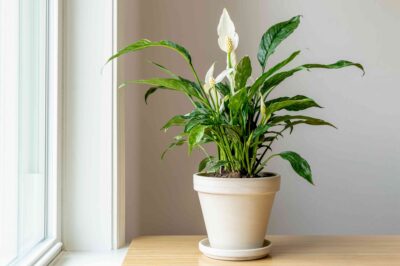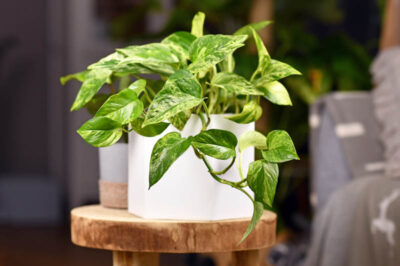Snake Plant, or Sansevieria, is a tough, low-maintenance houseplant known for its long, upright, sword-like leaves. With its striking green and variegated patterns, it’s a favorite for beginners and busy plant owners. This guide covers everything you need to know to grow and care for Snake Plant indoors.
Why Choose Snake Plant?
Hardy and Resilient: Tolerates neglect, low light, and irregular watering.
Air Purification: Filters indoor air, removing toxins like formaldehyde.
Versatile Decor: Fits in any space, from offices to living rooms.
Minimal Care: Perfect for those new to plant parenting.
Step-by-Step Guide to Growing Snake Plant
1. Select the Right Lighting
Snake Plants thrive in a wide range of lighting conditions, from low light to bright, indirect light. Avoid prolonged direct sunlight, which can scorch the leaves. They’re ideal for dimly lit corners or rooms with filtered light.
Tip: Variegated varieties need brighter light to maintain their patterns.
2. Use Well-Draining Soil
Plant your Snake Plant in a well-draining potting mix, such as a cactus or succulent mix. This prevents water retention, which can cause root rot.
Pro Tip: Ensure the pot has drainage holes to keep roots healthy.
3. Water Sparingly
Water only when the soil is completely dry, typically every 2-4 weeks. Snake Plants are drought-tolerant, and overwatering is their biggest enemy. In winter, water even less frequently.
Signs of Overwatering: Soft, yellowing, or mushy leaves.
Signs of Underwatering: Wrinkled or curling leaves (rare).
4. Keep in Suitable Temperatures
Snake Plants prefer temperatures between 60-85°F (15-29°C). They can tolerate slightly cooler conditions but should be protected from frost or extreme cold.
Avoid: Placing near drafty windows or air conditioning vents.
5. Fertilize Occasionally
Feed with a diluted liquid fertilizer (e.g., 10-10-10) once every 2-3 months during spring and summer. Avoid fertilizing in fall and winter, as the plant is dormant.
6. Prune When Needed
Trim dead or damaged leaves at the base with clean scissors to maintain appearance. Snake Plants don’t require frequent pruning due to their slow growth.
7. Propagate Snake Plant
Propagating Snake Plants is straightforward. Here’s how:
Cut a healthy leaf into 2-3 inch sections.
Place the cuttings in water or well-draining soil, ensuring the bottom end is down.
Keep in bright, indirect light and change water weekly (if using water).
Roots should form in 4-8 weeks. Transplant to soil once roots are established.
Note: Leaf cuttings may not retain variegation; for variegated plants, propagate by dividing the rhizome.
Common Problems and Solutions
Root Rot: Caused by overwatering. Repot in fresh, dry soil and reduce watering.
Brown Tips: Often due to inconsistent watering or low humidity. Trim tips and adjust care.
Pests: Rare, but mealybugs may appear. Wipe leaves with soapy water or use neem oil.
FAQs About Snake Plant
Is Snake Plant toxic?
Yes, it’s mildly toxic to pets and humans if ingested. Keep out of reach of pets and children.
How long do Snake Plants live?
With proper care, they can live for decades, growing slowly but steadily.
Can Snake Plant survive in low light?
Yes, it’s one of the best plants for low-light environments, though growth may slow.
Conclusion
Snake Plant is the ultimate low-maintenance houseplant, combining durability with timeless style. Its ability to thrive in various conditions makes it a must-have for any home or office. Follow these simple care tips to keep your Snake Plant healthy and vibrant. Start growing one today and enjoy its effortless beauty!
Keywords: Snake Plant, Sansevieria care, low-maintenance houseplant, grow Snake Plant, propagate Snake Plant
News
Unlock the Secret to Growing a Thriving ZZ Plant
The ZZ Plant (Zamioculcas zamiifolia), with its glossy, upright leaves, is a nearly indestructible houseplant that’s perfect for beginners and…
How to Grow Peace Lily: A Complete Care Guide
The Peace Lily (Spathiphyllum) is a beloved houseplant known for its elegant white blooms and lush green foliage. Its air-purifying…
How to Grow Mint at Home: A Complete Beginner’s Guide
Discover how to grow mint at home in pots or gardens. This easy guide covers planting, care, and harvesting tips…
How to Grow Monstera Deliciosa: A Complete Care Guide
Monstera Deliciosa, often called the Swiss Cheese Plant, is a tropical beauty known for its large, heart-shaped leaves with unique…
How to Grow Tomatoes at Home: Easy Guide for Juicy, Healthy Tomatoes
Want to grow tomatoes at home? Learn how to plant, care for, and harvest juicy tomatoes with this step-by-step gardening…
How to Grow Pothos Marble Queen: A Beginner’s Guide
Pothos ‘Marble Queen,’ also known as Epipremnum aureum ‘Marble Queen,’ is a stunning houseplant with heart-shaped, variegated leaves featuring creamy…
End of content
No more pages to load












